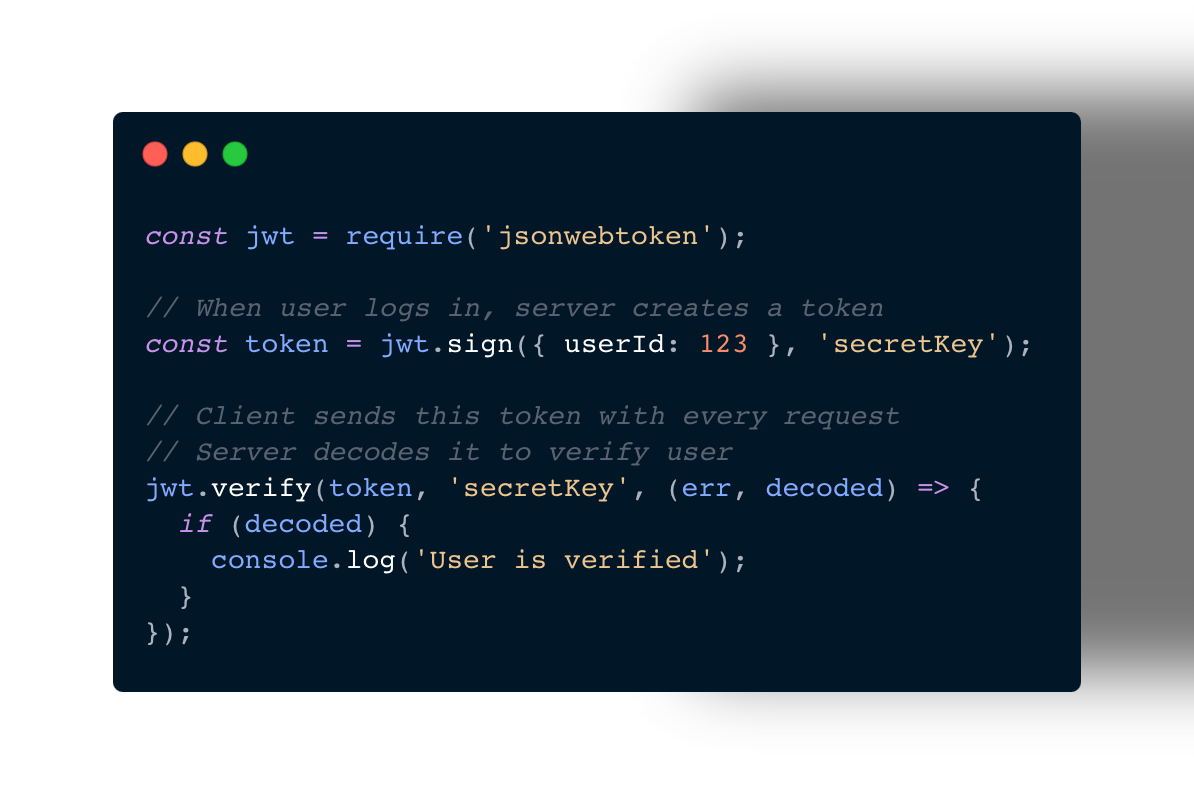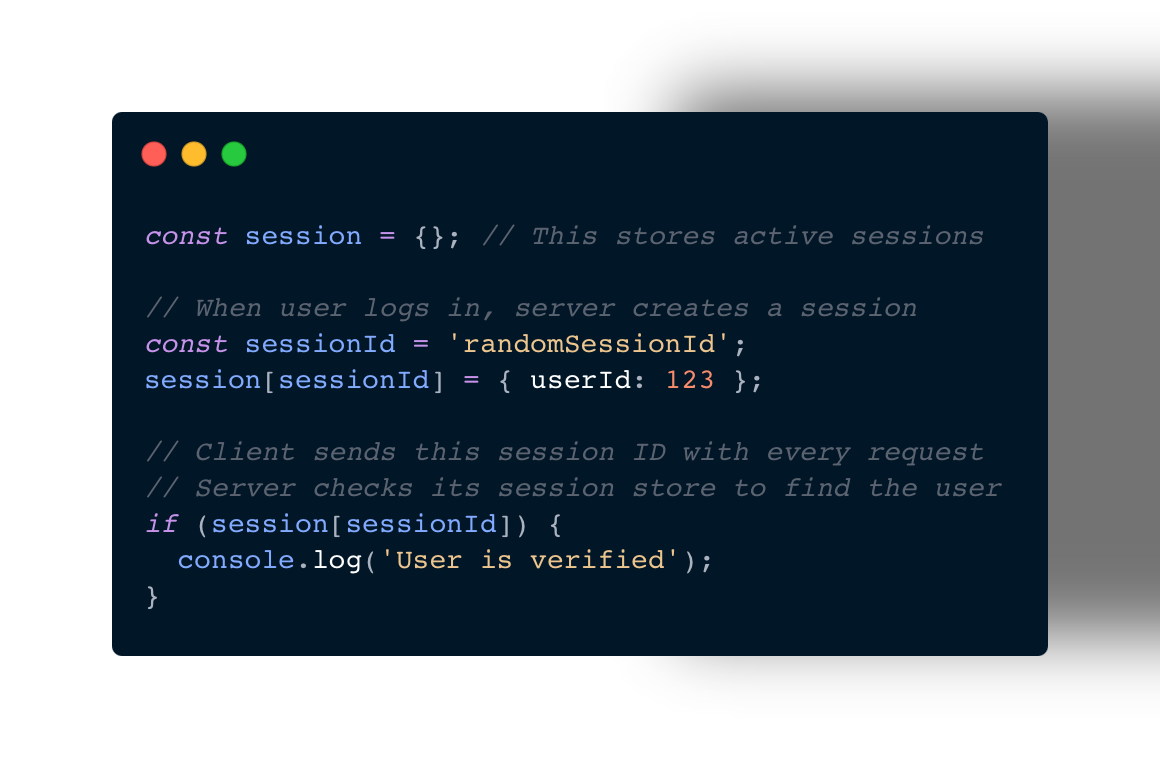Stateless vs Stateful Authentication in Node.js - A Simple Explanation
 Divyesh Jain
Divyesh JainWhen building a web app, one of the important decisions you need to make is how to handle authentication. In simpler terms, authentication is the process of making sure the person using your app is who they claim to be, usually by logging in with a username and password.
There are two popular ways to handle user sessions after logging in: stateless and stateful authentication. Let’s break down both approaches with real-life scenarios and keep the tech jargon minimal.
Stateless Authentication (Using Tokens)
How It Works:
Imagine you're at a movie theater. You buy a ticket, and the ticket has all the info needed—your seat, the time of the movie, etc. When you enter the theater, you show your ticket, and they let you in. You don’t need to give them your name again; the ticket has all the details.
Stateless authentication works just like this. When you log in:
The server gives you a "ticket" (which is a token, often called a JWT - JSON Web Token).
This token has all the information needed about you.
For every request you make, you show your "ticket" (send the token) to the server, and the server reads it to figure out who you are.
Example Scenario:
Think about a shopping app. When you log in, the app gives you a token that you carry around (usually stored in your browser). Every time you try to check your order history, the app uses this token to identify you, without having to remember your session on the server.
Pros:
Scalable: The server doesn't have to remember each user, making it easier to handle lots of users.
No server memory: Everything is packed in the token, so the server doesn't need to store anything about your session.
Cons:
- Hard to log out: If you want to log out a user immediately, it’s tricky since the token is valid until it expires.
Stateless (Token-Based) Example:

Login: The user gets a token (like a ticket) after logging in.
Requests: Every time the user makes a request, they send the token to the server.
Verification: The server checks the token to verify the user.
Stateful Authentication (Using Sessions)
How It Works:
Now imagine you go to your favorite cafe every day, and they remember your name and your usual order. Every time you visit, they know exactly what you want. But if they forget, you'd have to start over.
Stateful authentication works similarly. When you log in:
The server remembers you by creating a session.
It gives you a session ID, which you store (usually in a cookie).
Every time you make a request, you send this session ID, and the server checks its memory (session store) to recognize you.
Example Scenario:
Consider your bank’s website. When you log in, the server creates a session and remembers your account info. If you want to transfer money, the bank checks your session to make sure it’s still valid.
Pros:
Easy to log out: The server can destroy the session whenever it wants, logging you out immediately.
More control: The server has full control over your session and can revoke it anytime.
Cons:
- Hard to scale: If the server has to remember every user’s session, it can get tricky when lots of users are logged in at once. You need to store session data, which can become a burden.
Stateful (Session-Based) Example:

Login: The server creates a session for the user and sends back a session ID.
Requests: The client sends the session ID with every request.
Verification: The server checks its memory (session store) to verify the user.
Which One Should You Use?
Stateless (Token-based): Great for apps that need to scale easily, like a mobile app or microservice architecture where you don't want the server to remember each user. But logging users out immediately can be a bit tricky.
Stateful (Session-based): Better for apps where you need full control over user sessions, like a banking app, but it’s harder to scale because the server has to remember everyone.
Conclusion
Both stateless and stateful authentication have their uses. If you’re building a highly scalable app like an e-commerce store or social network, stateless authentication might be your best bet. If you need tighter control over user sessions, like in a secure dashboard or banking system, stateful authentication is the way to go.
In the end, it depends on what your app needs, and now you know how to choose!
Subscribe to my newsletter
Read articles from Divyesh Jain directly inside your inbox. Subscribe to the newsletter, and don't miss out.
Written by

Divyesh Jain
Divyesh Jain
I'm a quick learner, turning complex ideas into seamless user experiences.